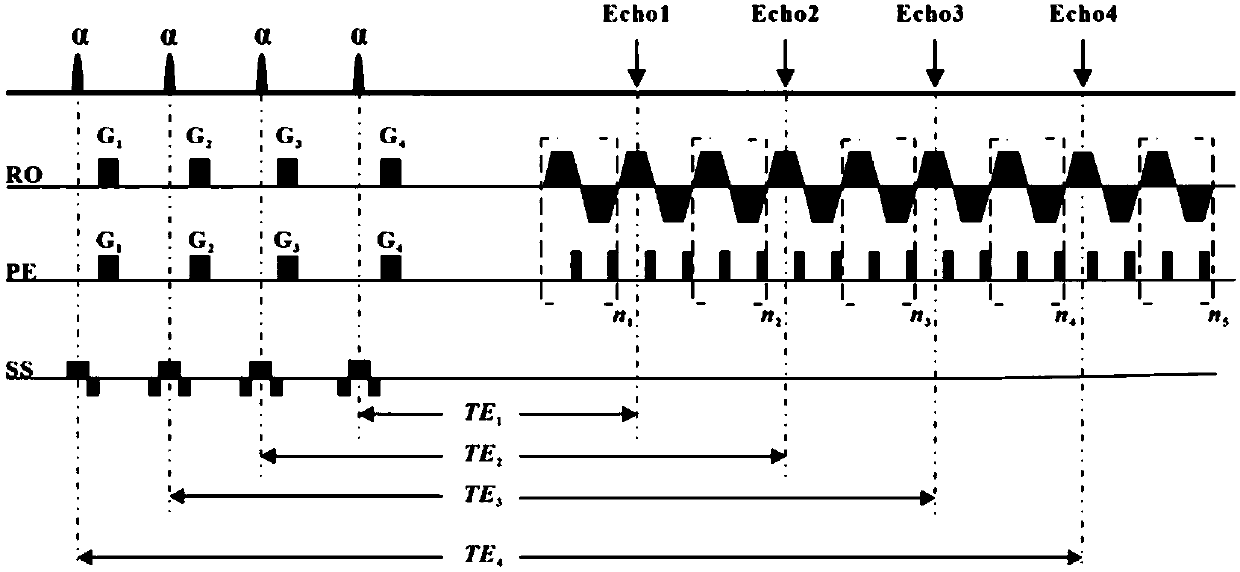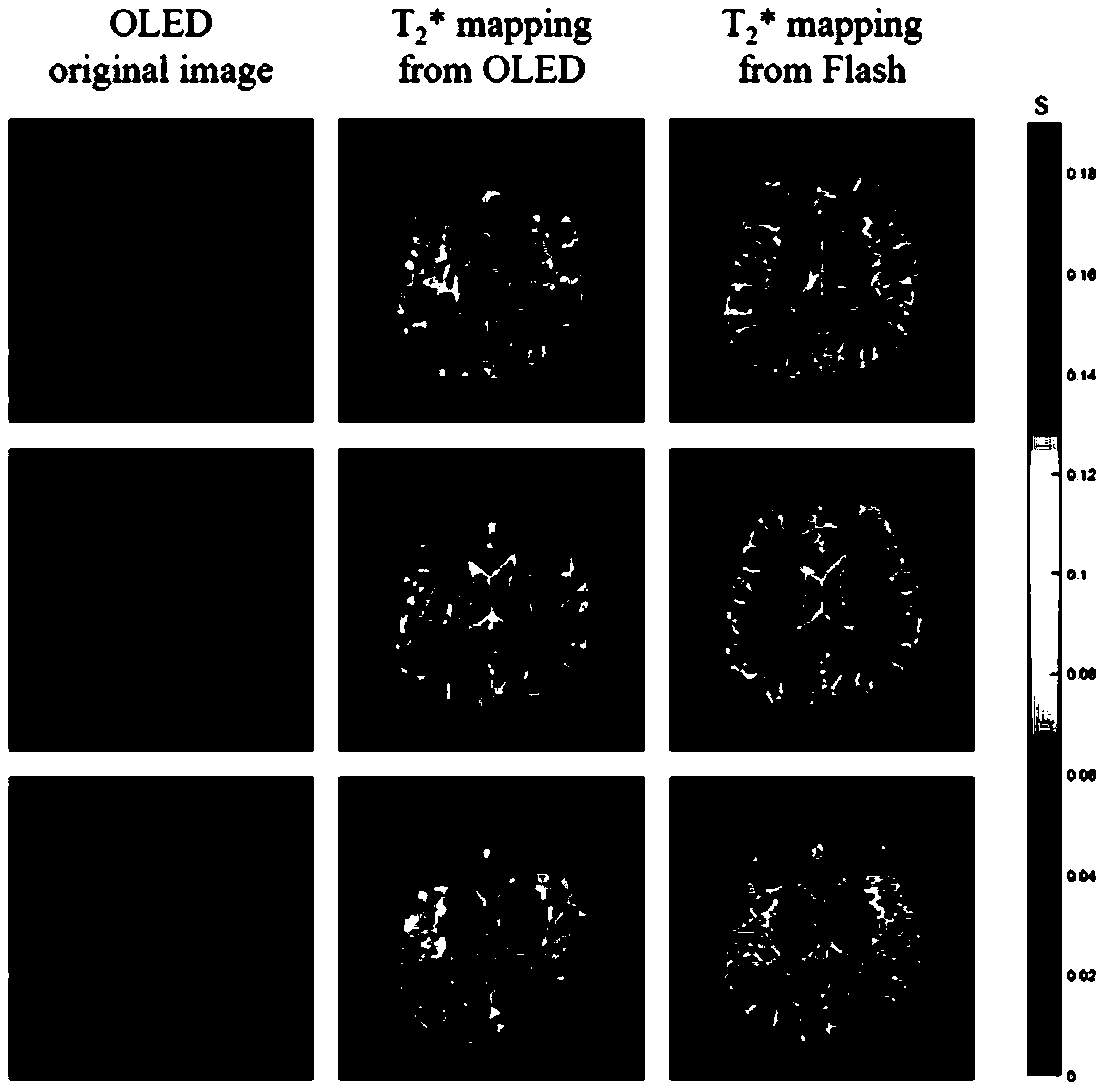Single-scanning quantitative magnetic resonance T2 * imaging method based on residual network reconstruction
A technology of magnetic resonance imaging and imaging method, which is applied in the directions of using nuclear magnetic resonance imaging system for measurement, magnetic resonance measurement, and magnetic variable measurement, etc. It can solve the problem of difficulty in separating four overlapping echo signals, and achieve a large measurement range. Effect
- Summary
- Abstract
- Description
- Claims
- Application Information
AI Technical Summary
Problems solved by technology
Method used
Image
Examples
specific Embodiment
[0066] Single-scan quantitative magnetic resonance T based on residual network reconstruction algorithm 2 *The quantitative imaging method has been carried out in human brain experiments to verify the feasibility of the present invention. The experiment was carried out under the human MRI 3T imager. On the operating table of the magnetic resonance imager, open the corresponding operating software in the imager, first locate the region of interest for the imaging object, and then perform tuning, shimming, power and frequency correction. In order to evaluate the effectiveness of the image obtained by this method, a Flash imaging experiment was carried out in the same environment as a comparison. Then import the compiled OLED imaging sequence (such as figure 1 (Shown), according to specific experimental conditions, set the various parameters of the pulse sequence, the experimental parameters of this embodiment are set as follows: the imaging field FOV is 22cm×22cm, the excitation ...
PUM
 Login to View More
Login to View More Abstract
Description
Claims
Application Information
 Login to View More
Login to View More - R&D
- Intellectual Property
- Life Sciences
- Materials
- Tech Scout
- Unparalleled Data Quality
- Higher Quality Content
- 60% Fewer Hallucinations
Browse by: Latest US Patents, China's latest patents, Technical Efficacy Thesaurus, Application Domain, Technology Topic, Popular Technical Reports.
© 2025 PatSnap. All rights reserved.Legal|Privacy policy|Modern Slavery Act Transparency Statement|Sitemap|About US| Contact US: help@patsnap.com



